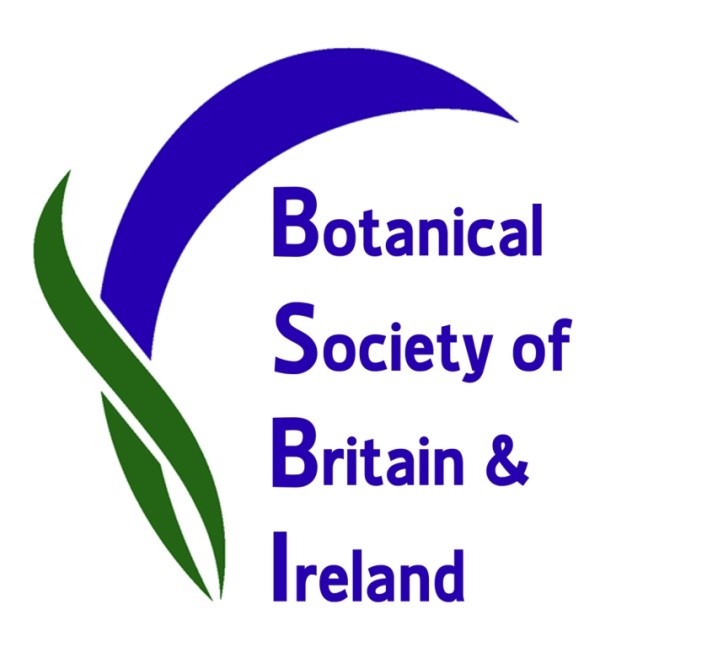Dumfriesshire Botany Group at River Nith, Closeburn, 6th September 2020
On a fine sunny day following government guidelines six of us met from 4 households, with no car sharing allowed between households.
Ranald using local knowledge had suggested where cars could be parked and we met by the water treatment works beside the track to Shawsholm. We then set off down the track with the aim of reaching the river, following that down to Nithside and then coming back in a circle along the minor road. We collected records in 5 monads following this route, though only recording everything in two of these!
The first realisation was that there has been some agricultural intensification in the area. So the broad floodplain of the Nith here is now fairly intensive rye grass for silage and grazing with little botanical diversity. In addition some pools shown on the map have disappeared under similar improved grassland. The early part of the walk has some mature hedges and fragments of species rich grassland giving a reasonable list of commoner species. One interesting species here was Prickly Sedge Carex muricata subsp. pairae. It likes drier grassland on banks and less agriculturally improved situations. Interestingly it was last recorded in this area at the Closeburn War Memorial in 1984.
The majority of the flood plain is separated from the river by a flood bank. The Nith is capable of covering its floodplain and so the flood bank keeps most of the winter floods in a much narrower flood zone. This area is much more natural being mostly ungrazed and has developed tall herbaceous stands and willow scrub woodland. In places here there are also pools and side channels.
At this time of year this is not the easiest vegetation to wade through but we were able to make use of fishermen paths in places between scrambling through willow and tall nettles, Himalayan Balsam and grasses!
The willows were mostly a mix of Osier Salix viminalis, Goat Willow Salix caprea, Purple Willow Salix purpurea and Grey Sallow Salix cinerea subsp. oleifolia. Willows colonise the gravels along big rivers and help stabilise banks. It is often surprizing to see how high water flows are when you see the debris line high up these shrubs. We didn’t on this occasion find any hybrid willows though this is often a good place to find them . We did find one magnificent White Willow Salix alba, a large stately tree.
I had hoped to find Water Sedge Carex aquatilis along the river’s edge as it has been found north and south of this section. However we did not find it instead finding a range of other interesting species of river banks and berms including Wood Club-rush Scirpus sylvaticus, Wood Stitchwort Stellaria nemorum, Tall Fescue Schedonorus arundinaceus and Marsh Woundwort, Stachys palustris. The best find of the day was probably a nice big patch of Northern Bedstraw, Galium boreale, growing amongst other tall herbs. This is an interesting species, rarely seen in quantity and normally found in upland grassland or on rocks along rivers. It was last recorded in this hectad in 1977. Lurking amongst the tall vegetation were plants of Keeled Garlic Allium carinatum, Giant Hogweed Heracleum mantegazzianum and another established neophyte was Dame’s Violet Hesperis matrionalis. In more open areas occasional panicles of Autumn Hawkweed Hieracium sabaudum were in full flower.
On the gravels the vegetation was rather bedraggled following the “summer” high flows. We were able to see the remains of Winter-cress Barbarea vulgaris and Marsh Yellow-cress Rorripa palustris, Water Forget-me-not Myosotis scorpioides and Water-pepper Persicaria hydropiper.
There were some nice rose bushes which we looked at. They are easier to id when they have mature hips. We were able to determine the following ; Glaucous Northern Dog-rose Rosa caesia subsp. vosagia with blue grey glabrous leaves, erect pinnate sepals and a broad stigma dome; Dog-rose Rosa canina s.l. with hairless green leaves, reflexed sepals and a small stigma dome; Soft Downy-rose Rosa mollis with tomentose leaves, straight prickles and erect simple sepals.
On the small lane back to the cars we paused to look at Orpine Hylotelephium telephium. This is a not uncommon native found almost exclusively in our area on hedge banks and surprisingly easy to miss.
The day produced nearly 220 records and as it turned out was the last meeting were able to hold a as group when restrictions relating to Covid 19 became stricter again.
Chris Miles
BSBI county recorder for Dumfriesshire VC73 – see bsbi.org/dumfriesshire

